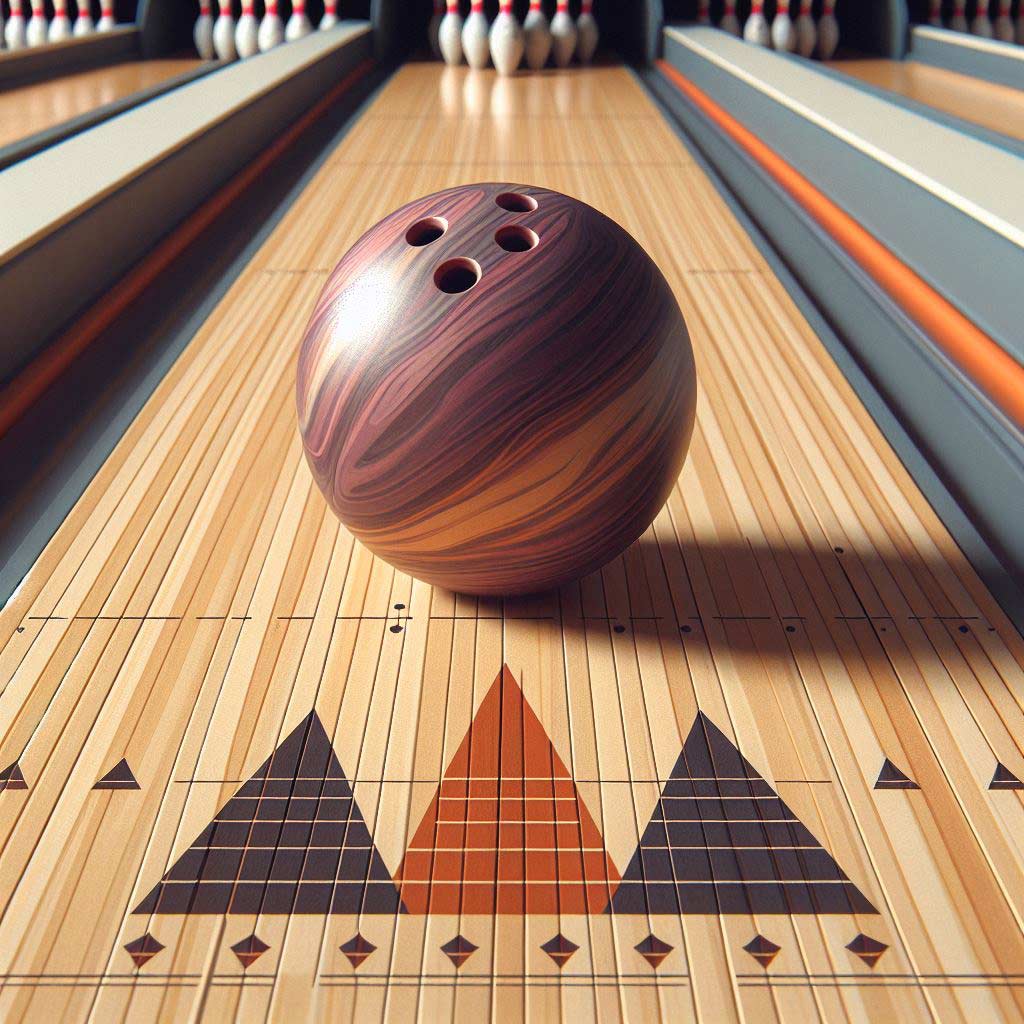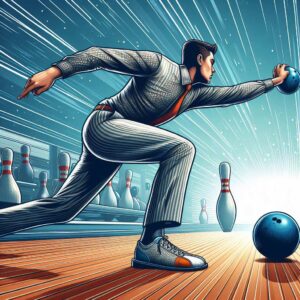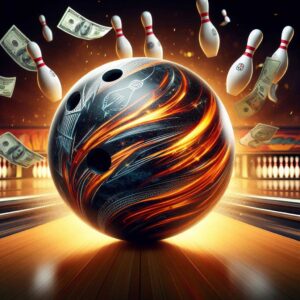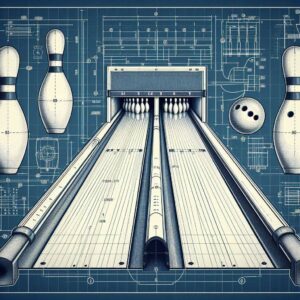Bowling lanes contain carefully constructed wooden or synthetic boards essential for guiding your ball toward the pins. But did you ever wonder – how many boards make up a regulation bowling lane?
Understanding lane boards goes far beyond casual bowling for fun. For competitive bowlers, having precision knowledge of the 39 different boards on the lane is a vital skill that heavily influences aim, power, and strategy.
This article will provide a comprehensive overview of the anatomy of a bowling lane, the exact number of boards it contains, the functional zones they create, and why lane board literacy elevates professional bowling.
Anatomy of a Regulation Bowling Lane
Before diving into the boards, it’s important to understand the basic structure of a regulation bowling lane.
The standard dimensions of a single lane, as dictated by the United States Bowling Congress, span 60 feet from the foul line to the headpin. The lane also extends for about 15 to 20 feet past the pins for ball return.
Lanes contain precisely constructed wooden boards or modern synthetic boards layered on top of a stable base foundation. This ensures smooth, level tracks for the ball to roll upon.
The lane surface, along with the specific oil patterns applied to absorb ball friction, work together to guide each throw toward the pins. The wood absorbs oil more in some parts of the lane which alters trajectories.
The boards and oil patterns allow professional bowlers to harness physics to their advantage. By altering angle, power, and spin, they exploit the boards and oil to achieve consistent strikes.
The Number of Boards on a Bowling Lane
So exactly how many boards make up a regulation bowling lane?
The United States Bowling Congress clearly defines requirements for lane dimensions. Each individual lane must be exactly 41 1⁄4 inches wide. This width is covered by precisely 39 individual 1-inch-wide wooden boards.
That adds up to a total of 39 boards across each lane!
This 39-board by 60-foot lane design is internationally standardized by the World Bowling Organization for use in global competitions everywhere from the Pan America Games to the World Bowling Championships.
The strict standardization of lane widths, boards, oil patterns, pins, and more ensures 2021 that every certified bowling competition in the world takes place under fair, equal conditions.
The Functions and Zones of Bowling Lane Boards
While there are 39 total boards, they are not all created equal in purpose and utility.
Bowling experts separate the lane into zones or segments based on optimal ball paths and angles into the pocket:
The Outside Track Area
Consisting of boards 1-3 near the gutters, and boards 37-39 on the opposite edges, this outside track area is seldom used during normal bowling play.
This zone comes most into play when aiming for tricky side spares picking up missed corner pins.
Also, extremely advanced players can sometimes use the outside track to harness swing and hook physics to achieve special curving strikes. But it’s an inconsistent zone normally left alone.
The Primary Target Zone
Consisting approximately of boards 8-20, the primary zone makes up the central axis of the lane.
This is the high-percentage money zone where you’ll witness almost all strikes and spares.
Balls thrown from straight-on or angled trajectories should focus on first contacting this primary zone which allows the best opportunity to pocket strikes.
Note that left-handed bowlers will use the opposite 19 boards on the right side of the lane. Those same principles apply just in reversed positioning.
The Intermediate Zones
The remaining intermediate boards between 4-7 and 21-36 comprise transitional spaces not directly inside or outside prime targeting areas.
These zones see some play when players need to make slight adjustments based on ball reactions. Small tweaks left or right within the intermediate spaces alter entry angles.
This allows bowlers to exploit the backend part of the oil pattern to correct errant shots missing just the left or right of the target.
Understanding The Significance of Lane Boards
You can see that while 39 boards stretch across the lane, not all real estate is created equal. In fact, the optimal scoring play takes place across the prime strike tracking zone consisting of about 10-12 centrally located boards on either lane side.
This begs the question – why is precision lane board knowledge so critical for professional bowling success? Understanding lane topography elevates bowling for several reasons:
-
It Allows Bowlers to Map Ball Paths and Adjust Accordingly
By understanding what zone of the lane their ball is contacting initially, bowlers can make minor foot position and aiming tweaks to move their ball left or right.
Micro adjustments of just one or two boards towards their optimal angle into the pocket make major consistency differences in striking.
-
Increased Versatility Adds More Scoring Weapons
When competitive events take place on tougher lane oil patterns, bowlers will need to use more boards to find the right mix of pocket entry angle and hook potential.
Rather than being limited to just a few prime scoring zones, lane board mastery provides greater versatility to strike on wider ranges of challenging lane conditions.
-
It Provides Insight on Reading Lane Transitions
As more bowlers throw on a lane over time within a tournament block, oil patterns break down through absorption and transition across boards.
This forces bowlers to make moves zone to zone to chase the evolving oil lines. Reading lane transitions and knowing alternate board zones prepares expert adjustments.
In Conclusion
Understanding the intricacies of the 39 boards on regulation bowling lanes pays huge dividends toward consistent scoring and spare shooting. While casual bowling looks easy on TV, make no mistake – professional lane board strategy and knowledge separates the top players.
Next time you bowl, see if you notice all 39 boards comprising the lane width. Or count how many initial boards upon release your ball crosses. Understanding your personal strike targeting zone provides major insight into increasing bowling prowess and fun.
After all, the difference between a gutter ball and a 300 game might boil down to a single side-to-side step across the lane’s 39 boards!
Frequently Asked Questions
How do you count boards on a bowling lane?
To count boards, start from the left or right gutter as board #1 and count each board across until you reach the opposite gutter at board #39. Most bowlers visualize boards in groups of 5 for easier targeting.
How many boards do you move in bowling?
High-level bowlers may move their target line left or right by 3-5 boards to make adjustments based on ball reaction. Beginners should start with moves of just 1-2 boards to gradually refine accuracy.
How many lines does a bowling lane have?
There are no official marked lines, but the rows of boards create about 40 parallel lane lines. Some bowling centers use oil patterns with wider lines of heavier conditioning agents applied to guide ball reaction.
How many arrows does a bowling lane have?
Regulation bowling lanes contain 7 arrows evenly spaced about 15 feet from the foul line. They guide bowlers to stand in the correct position. Each arrow aligns with a set of boards behind it further downlane.
What is Rule 31 in bowling?
Rule 31 means that if pin(s) are knocked down by a non-bowler or machine error, the pin(s) are reset where they were before the next delivery.
What is proper bowling lane etiquette?
Wait for the bowlers beside you to finish before stepping up. Stay off the approach area when not bowling your turn. Allow faster groups to play through if traveling slower. Limit movement behind bowlers in progress.
Where do pro bowlers aim?
Professionals typically roll balls out over the center dotted targeting arrow pointing at the second arrow, allowing their ball to naturally hook into the pocket between the 1-3 pins for a strike.
What is the 3-6-9 method for spares?
The 3-6-9 spare system means targeting either the 3rd arrow, 6th arrow, or 9th arrow when attempting different spare leaves based on the angle to the remaining pin(s).
How many bowling pins are in a lane?
Regulation 10-pin bowling features a triangular set of 10 pins per lane. Five pins sit in the front row including one headpin.





